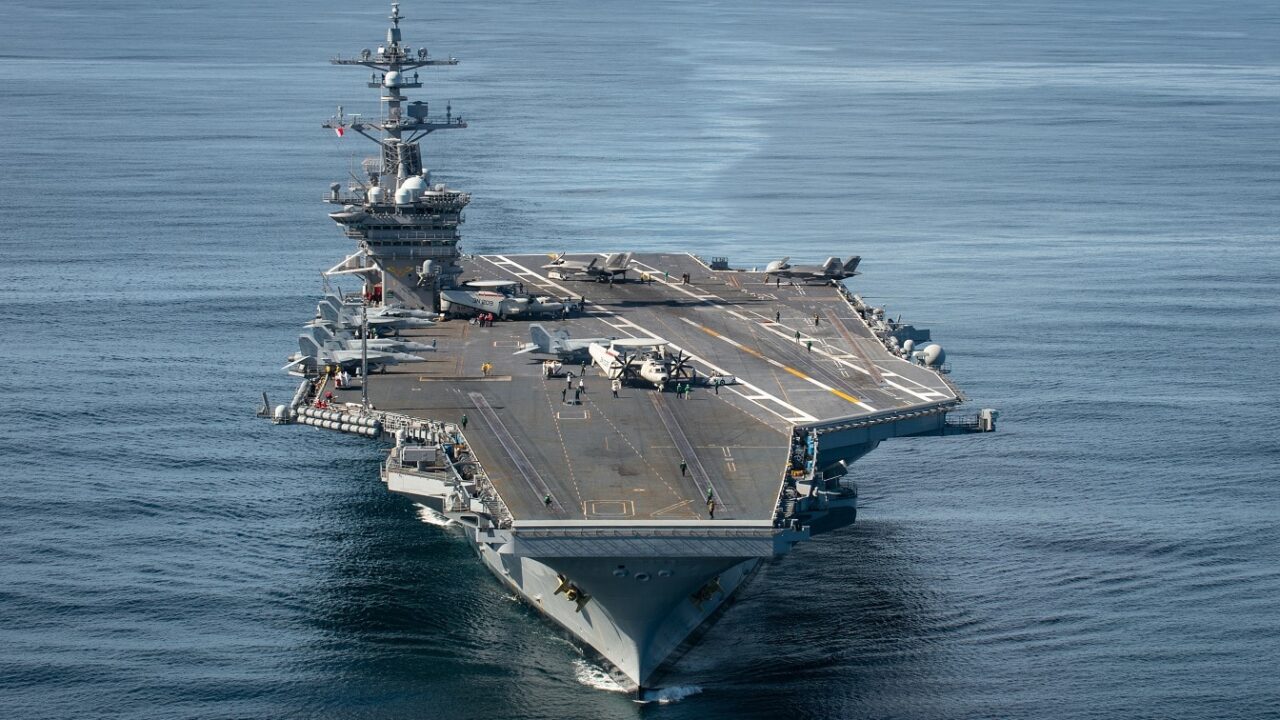While not the most modern aircraft carriers in the US Navy arsenal, these carriers are among the best to ever sail. Some would say they are the best: The Nimitz-class aircraft carrier is the main platform the U.S. military uses to project power around the globe. The 10 carriers in the class are the largest ships in the world (until the Gerald R. Ford-class officially joins the fleet) with a crew of 3,200 sailors and 2,500 air personnel. Whenever a crisis crops up, the initial question is – can a carrier strike group be deployed there?
And it’s not just for military purposes, carriers can also respond to natural disasters too. No other navy in the world has such an offensive, defensive, and special purpose capability.
However, any ship this size has its downsides, as the Nimitz-class surely needs a lot of maintenance and constant upkeep. Here is a basic primer to under these legendary ‘flattops’.
The Air Wing Dominates
Since it’s a floating airport, let’s start with the most important aspect of a carrier – the air wing.
The Super Hornet is the featured fighter plane. There are 24 to 36 F/A-18E/F Super Hornets on board, plus 10 to 12 older F/A-18C Hornets.
Next, come the 4 to 6 EA-18G Growlers for jamming and countermeasures.
For air combat control, the Nimitz-class has 4 to 6 E-2C or D Hawkeyes. Then there are helicopters for anti-submarine warfare – 6 to 8 MH-60R Seahawks.
The Nimitz-class can launch 150 sorties a day at a rate of 20 seconds for each airplane sent airborne. There are four catapults and four arresting cables on deck, which is 1,092 feet by 252 feet in size.
It Can Play Defense Too
The Nimitz-class can also defend itself with Sea Sparrow missiles that engage hostile aircraft or enemy missiles.
Four 20-mm Phalanx CIWS missile defense cannons protect the ship from bogeys.
The carrier can also launch flares and chaff to spoof heat-seeking missiles.
A towed Nixie decoy device confuses enemy torpedoes.
Nuclear Power Has Its Advantages
Two A4W nuclear reactors comprise the propulsion system. They operate four propellor shafts.
The reactors heat water which is sent through four turbines that turn four screws. This all results in a top speed of over 30 knots. Nuclear power can run for 20 years – the service life mark when it needs refueling and overhaul.
Maintenance and Readiness Are Clear Challenges
The Nimitz-class carriers are clearly among the best aircraft carriers on Earth, but such massive warships need constant upkeep.
U.S. aircraft carriers cost over a billion dollars a year to maintain. This requires another $910 million to service the aircraft onboard.
Carriers are constantly in and out of maintenance. Upon orders from the combatant commanders, the ships can “surge” to meet operational needs. The carrier itself may be ready for deployment, but what about the crew and air personnel? They need to all be trained to accomplish the mission. The RAND Corporation in a study found that some surge cycles take 90 days.
But the Navy is aware of these problems and is working to optimize the maintenance and readiness of the Nimitz-class. Having ten floating cities with their own airport is worth it.
1945’s new Defense and National Security Editor, Brent M. Eastwood, PhD, is the author of Humans, Machines, and Data: Future Trends in Warfare. He is an Emerging Threats expert and former U.S. Army Infantry officer.

